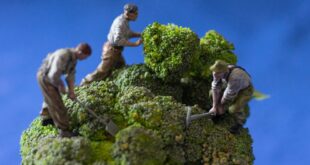If you grew up in New Zealand then chances are you will recognise the monarch butterfly. In the 1950’s, when I was at primary school, every classroom had a Nature Table. Every Spring someone would bring in some monarch caterpillars on swan plants.
But here’s a few facts you probably never knew about them.
Did you know you can tell the difference between a male and a female monarch? It’s not so easy with other species of butterfly, but monarch males have two scent glands which appear like black dots on their hindwings. The veins on female monarchs are also thicker than on the male.
Here in New Zealand, monarch butterflies are considered natives even though they originated in North America. They introduced themselves in the early 1800’s, possibly earlier, by either flying here or being blown. In North America they make a spectacular migration each Autumn (Fall) from as far north as Canada to join millions of monarch butterflies in reserves in the mountains of Mexico’s Transvolcanic Belt. It is the most amazing migration to witness, with some butterflies having flown 5,000 kilometres!
New Zealand does not have a large number of butterfly species we can call our own, but we do have about 2,000 moths, of which over 90% are endemic.
All butterfly and moth species need two types of plants: The females of each species lay eggs on ‘host plants’, which vary depending on the butterfly. I think everyone knows the cabbage white butterflies lay eggs on brassicas like your cabbages and cauliflowers. The monarch, of course, lays eggs on swan plants, so called because the seed pods resemble swans before they split open, the wind scattering their seeds.
Did you know the swan plant originated in Africa? It is believed the seed arrived in New Zealand as a ‘stowaway’ inside a pillow, cushion or garment which was bought by settlers visiting ports on their journey here. The fibre attached to the seed has been used for many years as a stuffing material.
During WWII, when America joined the Allies, they needed kapok to fill Mae Wests, or life preservers, for the navy. As Indonesia was held by the Japanese there was no kapok available, so schools in the United States were called upon to send their students out into the fields to gather milkweed floss and it was found to have a better flotation score than kapok.
But I digress. The other type of plant all butterflies need is a nectar source: bright, colourful flowers loaded with nectar. Butterflies are pollinators, like bees, so as they extend their proboscis deep into the centre of a flower, they collect pollen, which they then leave in another flower, allowing fertilisation of the flowers and in the end producing seeds or fruit. It is estimated that ¾ of our food depends on pollination.
Have a thought for our butterflies this spring. Because of the COVID-19 restrictions in many parts of New Zealand, people are unable to browse garden centres and collect a swan plant for the butterflies. In Auckland, for example, while we can Click’n’Collect, we are probably only buying the essentials. Why not add a swan plant or two for the monarchs?
If you’d like to know more about our butterflies and moths, and how to help them, sign up for the free e-news delivered to your inbox by the Moths and Butterflies of New Zealand Trust, www.nzbutterflies.org.nz.
By Jacqui Knight










Join the Discussion
Type out your comment here:
You must be logged in to post a comment.